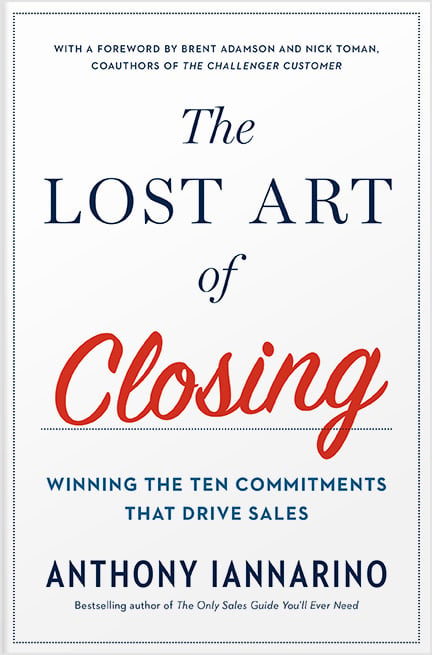When you start in sales, you need deals. One deal is as good as another deal, a perspective that is helpful because you cannot learn to sell without actually selling. As you progress in gaining sales acumen, you also acquire the business acumen and the situational knowledge necessary to winning bigger deals. You need to start targeting bigger deals, working your way up to monster deals, the opportunities that move the needle for your client, your company, and you personally.
Here is an outline of how you create enormous opportunities and win big deals.
Start with Big Targets
Floyd Mayweather, the undefeated professional boxer, was carefully and intentionally managed. He didn’t walk straight out of the gym and into a championship fight. Instead, Floyd advanced from opponents he could beat with little trouble, to tough pugilists who would require more effort to overcome, moving up to tougher competition from fight to fight. He didn’t start with the most prominent targets; he began with the most significant targets for him based on his experience.
There is no reason not to target big deals early on if you have the help and support you’ll need to win them. There is, however, every reason to target larger clients, the greater your experience in sales—and the greater your ability to create value. You cannot win big deals if you don’t have a target list of dream clients, those companies that spend significant dollars in your category and have the types of challenges with which you can help them.
For reasons I described in Eat Their Lunch: Winning Customers Away from Your Competition, you might start with sixty prospects, knowing some are not compelled to change, some will be motivated to change, and some will be somewhere between those to two poles. Building your list of targets is step one.Win customers away from your competition. Check out Eat Their Lunch
Build a Long Term Pursuit Plan
You are not going to pick up the phone, make a call, get a meeting, create an opportunity, and win your dream client on day one of your pursuit plan (unless the Gods of Prospecting are smiling on you for your ceaseless prospecting efforts in the past, which is the only way you win their favor). Most of the time, however, you are going to be playing the long game.
Your effort needs to include a prospecting sequence that combines a request for meetings with the clever use of nurture tools (something we call “no ask” content, because you don’t ask for anything). A proper prospecting sequence will help you by making sure your dream client knows who you are, and the nurture content will prove that you are smart, savvy, and capable of supporting your dream client produce better results.
Native Americans who used the rain dance never failed to make it rain because they didn’t stop dancing and water fell from the sky. If you are skeptical that causation is missing, know that persistence works precisely the same way. Getting a meeting is going to take time, effort, and a good deal of persistence on your part, something most of your competitors will lack.
Start Making Connections Up and Down
You have heard to start at the top of the organization chart and work your way down into the organization, an idea that is easy to execute if you call on smaller or medium-sized companies, but more difficult if you are calling J.P. Morgan Chase (as Mr. Dimon may have little interest in what you sell, and has people he counts on to make the right decisions on his behalf).
If you want to start with the CEO of the Problem, the highest level person who would care about what you might do to help them with a better result, have at it. It’s a useful and practical approach. In the early days of your pursuit of the White Whale, you may be better off finding someone willing to meet with you, and who will share information with you.
In bigger B2B deals, where you are going to need to build consensus (some of the rules for which you find here), just getting in the building can be a good start. In big deals, you think vertically and horizontally, which means you acquire contacts in the area of the business you primarily serve, as well as the other areas of the company that are going to have some concern over any change you might help your client make.
Establish Yourself as a Value Creator
In every meeting, you want to establish yourself as a value creator (you can learn more about creating compelling, differentiated value by watching this YouTube video). In B2B sales, you do this by being consultative, sharing ideas about what should be compelling your dream client to change, sharing insights and ideas you have gained by working with your existing clients, and helping them make sense of their world and their potential for change.
Your wallet share is not going to exceed your mindshare. You are shaping the future opportunity by having conversations with the people who are eventually going to do something different in the future.
Given a long enough timeline, every one of your dream clients is going to change partners, as will all of your clients and customers. When it is time for your potential clients to start considering change, you will either have shaped their thinking or not. You won’t use the time you have to capture mindshare and wire the building.
Probe for Weakness and Small Opportunities
As your contacts get to know you, they’ll share more with you, including all of the challenges they once kept close to their vest, not wanting you to feel like there was a real opportunity. You need to identify the small weaknesses that later reveal your competitor’s larger weaknesses.
There was a time when I had no interest in winning small deals, preferring to win more massive deals. My thinking evolved on the value of creating small opportunities, as a way to create substantial opportunities. It can help to have a signed contract, humble though it may be.
Once inside, you are a supplier or vendor (not yet doing the work to be considered a strategic partner). The company will be sending you checks, and you will have access to the people you are working with—as well as access to people with whom you are not yet helping.
If you find a way in to do business, you have made progress.
Work to Identify Larger Opportunities
Maybe you found a small opportunity, and perhaps you didn’t. Either way, your communication must reveal an area where your contacts are already compelled to change or some space where you can compel the need to change.
Here is the truth about big deals. For an opportunity to be significant for you, it has to be big for your prospective clients. You can’t make big deals out of small problems.
The time you spend with contacts inside your dream client should result in you finding a larger opportunity, a theory about why and how your big deal client should or could be doing something to improve their results, and building consensus around your recommendation.
Control the Process
If there is one thing that would significantly improve your ability to create and win big deals, it would be learning to control the process, the series of conversations and commitments your client needs to engage in to decide to change, to collaborate on a solution, and to choose the best potential partner. You want to influence the buying decision.No more pushy sales tactics. The Lost Art of Closing shows you how to proactively lead your customer and close your sales. 
Winning big deals requires an approach that is valuable to your client, something that most of your competitors will not recognize for the competitive advantage it provides those who can “sell the process.” Your dream client is trying to decide whom they want as a partner, and that often counts for as much as the solution, especially when execution is a variable.
Winning big deals isn’t easy, and it isn’t always fast. Many take more time, and beating your competition means doing your very best work.








.jpg?width=768&height=994&name=salescall-planner-ebook-v3-1-cover%20(1).jpg)


